Create a Children's Study Corner

Children should not only learn good dietary and exercise habits but good study habits as well. They need space to do their homework and everyday tasks. Help them by creating their study corner.
Children need to feel comfortable in their study area and have resources on hand for intellectual growth. Aside from their needs, a study area will last a long time.
Investing in our children’s education is undoubtedly important. To study efficiently, they’ll need tasks or homework to do as well as peace and quiet.
Choosing the right space for a study corner
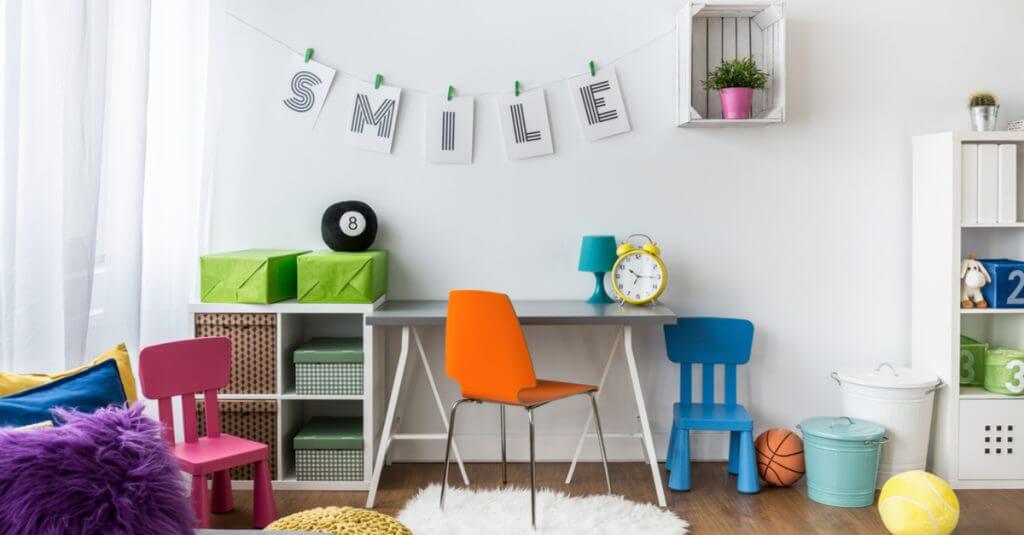
First things first, you have to look for a suitable spot for a study corner. More often than not, we fill our home with furniture and objects, forgetting to leave space for the things that matter. You have to stop and think about what’s best for your children.
Ideally, you should set up a study space in their rooms. Look for a space and it’s even better if it’s close to a window that lets in natural light.
Create a diaphanous, wide open and simple space for them. Filling up their rooms with toys and objects won’t help. It could be overwhelming and make their rooms feel cramped.
— Your children’s rooms is a great place for their study corner. —
Furnishing a study corner
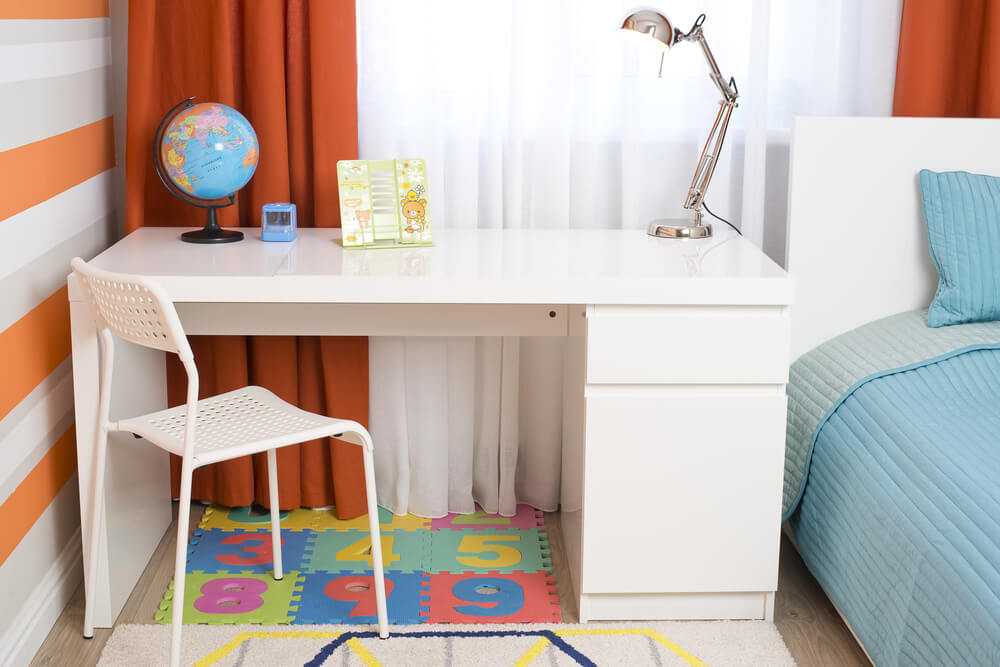
When it comes to organizing the study corner, you first have to choose the right furniture pieces and main resources:
- Big desk to fit all kinds of elements.
- Cabinets with drawers and shelves.
- Adjustable chair to help them stay comfortable the whole time.
- Computer (for older children).
- Warm light flex lamp.
- Corkboard to post reminders, pictures, etc.
Study space for 3- to 6-year-olds
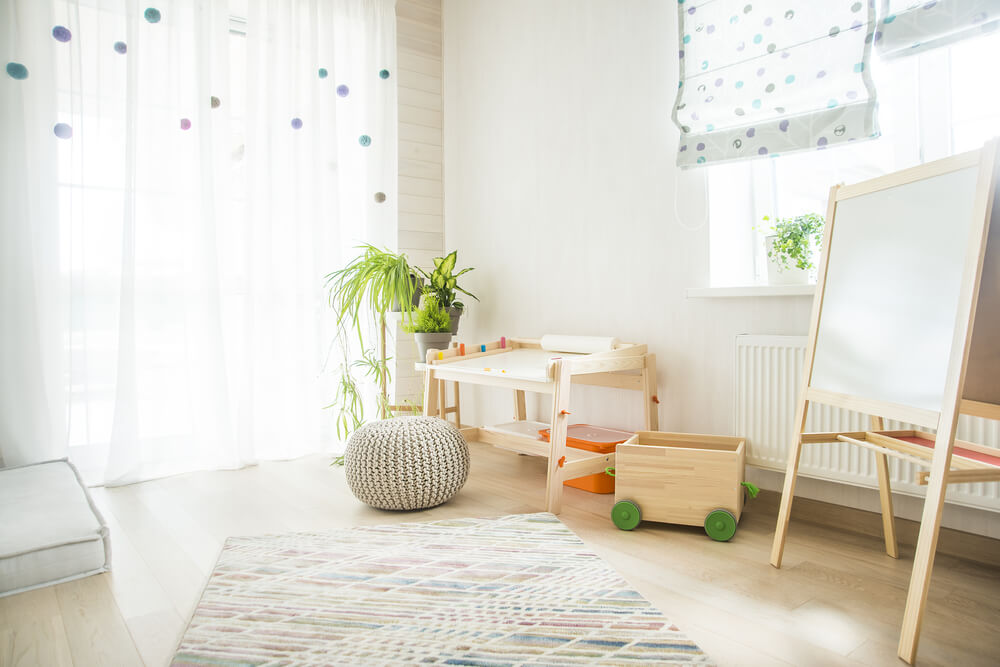
Though 3- to 6-year-olds are still too young to study, you can give them a workspace where you can gradually teach them about tasks and chores.
- You can use the space for daily activities, games, play-time, drawing, writing, etc. To do all those things, you’ll need a low table and small chairs. Everything should have a kid-friendly design.
- This space is ideal for setting up a shelving unit to hold books, notebooks, papers, pencil cases, and paints. That way, your children will always have their things at arm’s reach.
- A cushioned rug so they can play on the floor.
- Colorful decor to create a fun place to learn.
Study area for 7- to 12-year-olds
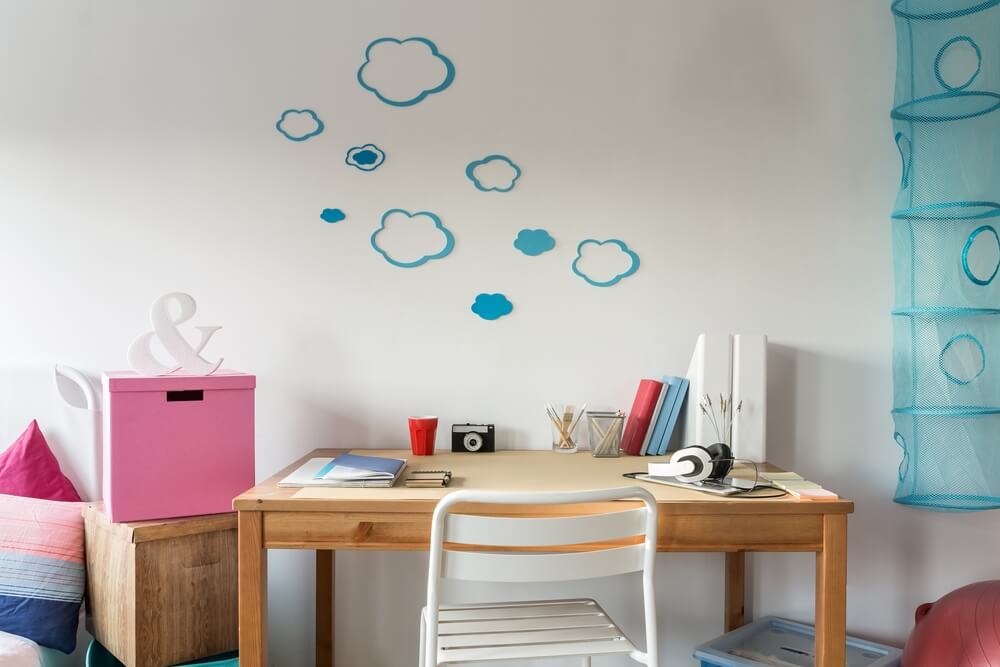
As children grow up, they start needing a private space for themselves where they can do their homework. Their study areas get a little more serious.
- You can add a desk (preferably wood) to their rooms that sits on top of two cabinet supports. The cabinets can give them space to store their personal items.
- Regardless of where you and how you place it, they need a shelf.
- Choose the right colors; neutral tones work great and help concentration. Dark colors like marine blue are another good option. But make sure that the colors match the rest of the room.
— Remember that every piece of furniture should flow with the surrounding decor.–
Do children need a separate room for a study area?
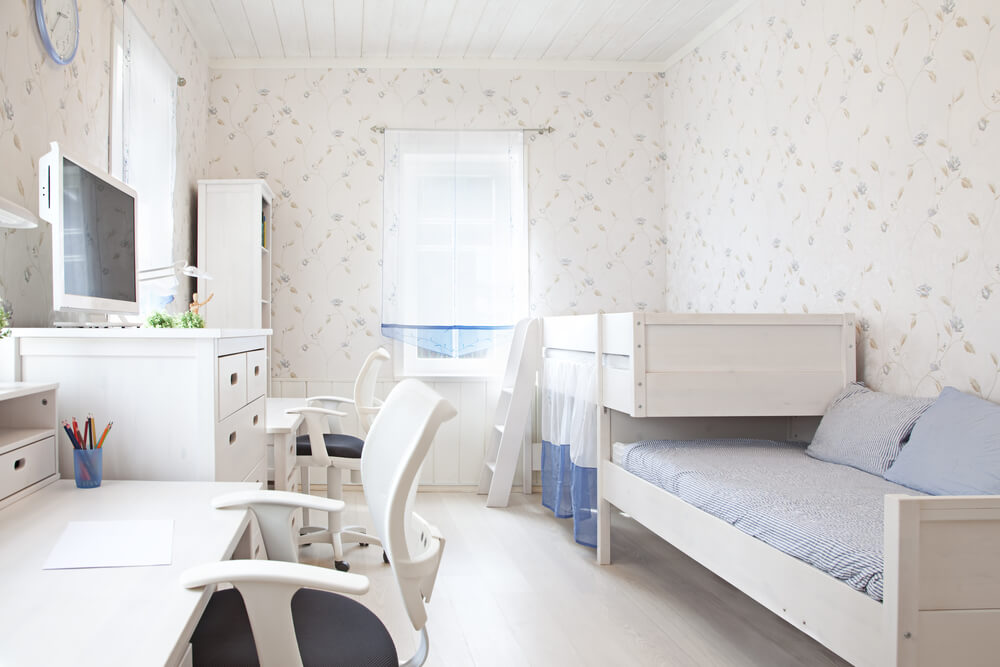
Children don’t need a personal, private study room on top of their bedroom.
Just make sure that your children get used to sleeping and studying in a specific room. That space will be their personal space, which can be beneficial for them for more reasons than just studying.
On a different note, creating an entertainment room that both parents and children can enjoy is another important idea. It will create a common space that everyone can share.
Children should not only learn good dietary and exercise habits but good study habits as well. They need space to do their homework and everyday tasks. Help them by creating their study corner.
Children need to feel comfortable in their study area and have resources on hand for intellectual growth. Aside from their needs, a study area will last a long time.
Investing in our children’s education is undoubtedly important. To study efficiently, they’ll need tasks or homework to do as well as peace and quiet.
Choosing the right space for a study corner

First things first, you have to look for a suitable spot for a study corner. More often than not, we fill our home with furniture and objects, forgetting to leave space for the things that matter. You have to stop and think about what’s best for your children.
Ideally, you should set up a study space in their rooms. Look for a space and it’s even better if it’s close to a window that lets in natural light.
Create a diaphanous, wide open and simple space for them. Filling up their rooms with toys and objects won’t help. It could be overwhelming and make their rooms feel cramped.
— Your children’s rooms is a great place for their study corner. —
Furnishing a study corner

When it comes to organizing the study corner, you first have to choose the right furniture pieces and main resources:
- Big desk to fit all kinds of elements.
- Cabinets with drawers and shelves.
- Adjustable chair to help them stay comfortable the whole time.
- Computer (for older children).
- Warm light flex lamp.
- Corkboard to post reminders, pictures, etc.
Study space for 3- to 6-year-olds

Though 3- to 6-year-olds are still too young to study, you can give them a workspace where you can gradually teach them about tasks and chores.
- You can use the space for daily activities, games, play-time, drawing, writing, etc. To do all those things, you’ll need a low table and small chairs. Everything should have a kid-friendly design.
- This space is ideal for setting up a shelving unit to hold books, notebooks, papers, pencil cases, and paints. That way, your children will always have their things at arm’s reach.
- A cushioned rug so they can play on the floor.
- Colorful decor to create a fun place to learn.
Study area for 7- to 12-year-olds

As children grow up, they start needing a private space for themselves where they can do their homework. Their study areas get a little more serious.
- You can add a desk (preferably wood) to their rooms that sits on top of two cabinet supports. The cabinets can give them space to store their personal items.
- Regardless of where you and how you place it, they need a shelf.
- Choose the right colors; neutral tones work great and help concentration. Dark colors like marine blue are another good option. But make sure that the colors match the rest of the room.
— Remember that every piece of furniture should flow with the surrounding decor.–
Do children need a separate room for a study area?

Children don’t need a personal, private study room on top of their bedroom.
Just make sure that your children get used to sleeping and studying in a specific room. That space will be their personal space, which can be beneficial for them for more reasons than just studying.
On a different note, creating an entertainment room that both parents and children can enjoy is another important idea. It will create a common space that everyone can share.
All cited sources were thoroughly reviewed by our team to ensure their quality, reliability, currency, and validity. The bibliography of this article was considered reliable and of academic or scientific accuracy.
Iglesias, Mara: Decoración fácil y económica, Buenos Aires, Ediciones Lea, 2013.







